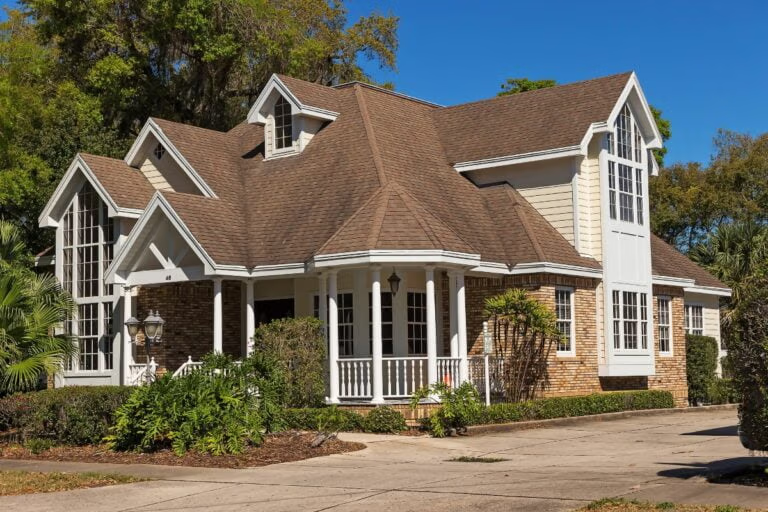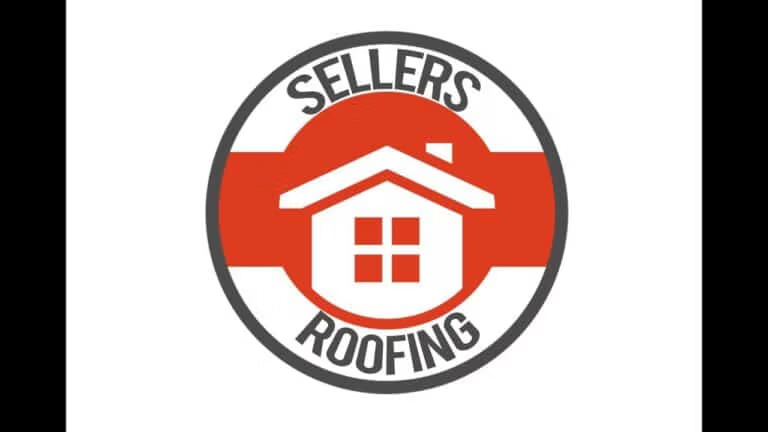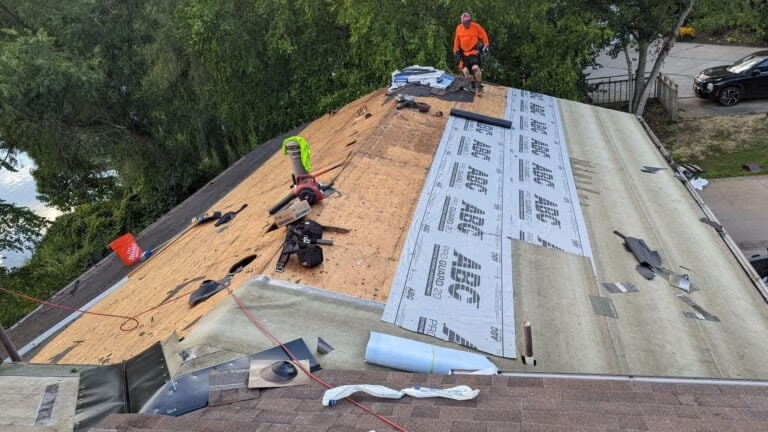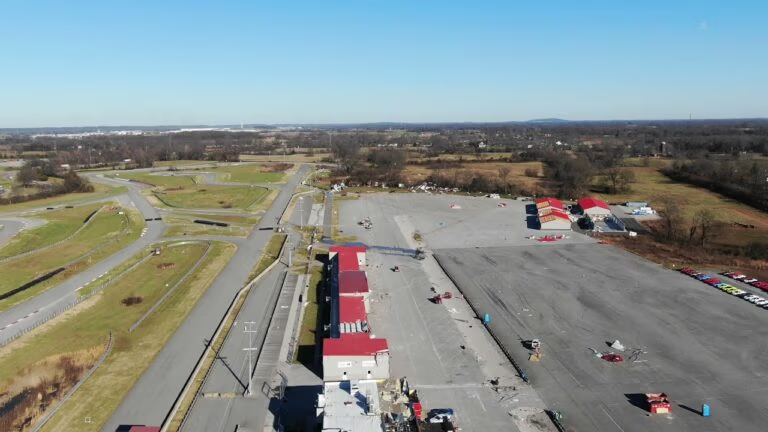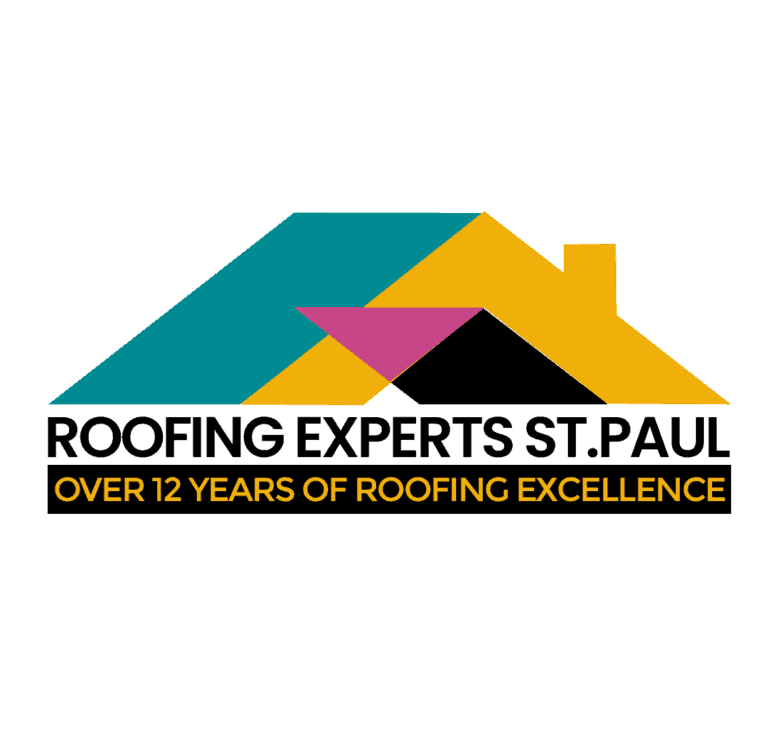Optimized Table of ContentsTable Of Contents:
- Top Flat Roof Repair Materials Compared for Longevity
- The Advantages of Using EPDM for Flat Roof Repairs
- Evaluating TPO Membrane for Long-Lasting Flat Roof Repairs
- Exploring PVC Membrane Roofing for Durable Flat Roof Solutions
- The Role of Modified Bitumen in Flat Roof Repairs
- Comparing Metal Roofing Solutions for Flat Roof Durability
- Factors Influencing the Choice of Flat Roof Repair Materials
- Conclusion
Top Flat Roof Repair Materials Compared for Longevity
When it comes to roof repair, choosing the right materials can make all the difference in longevity and durability. Many property owners often overlook their flat roofs, assuming any material will suffice. In this article, we will compare essential options such as EPDM, TPO, and PVC membranes, alongside other alternatives like modified bitumen and metalroofing solutions. By understanding these key materials, you’ll be better equipped to make informed decisions that enhance your roofing system’s lifespan and address common flat roof issues. Whether it’s leaks or wear, we aim to provide clarity on how to effectively solve your roofing challenges.
The Advantages of Using EPDM for Flat Roof Repairs
EPDM stands out as a prime choice for flat roof repairs due to its exceptional composition and durability. I’ll explain the best installation techniques to ensure optimal performance, discuss common issues like hail damage and flat roof bubble repair, and provide maintenance tips for enhancing longevity, all while balancing cost considerations for your repair materials.
Understanding the Composition and Durability of EPDM
EPDM rubber is widely recognized for its impressive longevity, making it an optimal choice for flat roof repairs. Its synthetic composition allows it to withstand varying weather conditions, including heavy snow and intense sunlight, without degrading. This durability ensures that your roof can effectively handle debris accumulation without significant damage, reducing the need for frequent repairs.
In my experience, proper installation of EPDM contributes significantly to its lifespan. By ensuring a seamless application, I can reduce the potential for leaks or bubbles that might arise from improper sealing. For anyone involved in home improvement projects, investing in EPDM not only enhances durability but also provides long-term savings due to its resistance to environmental stressors.
Installation Techniques for EPDM Membranes
When installing EPDM membranes, I emphasize the importance of a clean and secure deck. Before application, I conduct a thorough inspection to identify any underlying issues that could compromise the roof‘s integrity, especially beneath metal roofs. Ensuring that the surface is free of debris and contaminants allows the EPDM to adhere properly, maximizing its lifespan and performance against severe weather conditions.
Using the right adhesives is essential for a successful installation of EPDM. I prefer adhesives based on propylene for their excellent bonding capabilities. Applying an even layer of adhesive and securely fastened seams prevents bubbles and potential leaks, creating a robust barrier against environmental stressors and enhancing the longevity of the roofing system.
Common Issues and Maintenance Tips for EPDM Roofs
EPDM roofs can present specific challenges, such as punctures or tears, which may compromise their durability. To address these common issues, I recommend conducting regular inspections, especially after extreme weather conditions, to identify any damage that could lead to leaks. In cases where I’ll need to perform a roof replacement, using high-quality monomer-based products during the repair process can help enhance the roof‘s energyefficiency and overall performance.
Maintenance is key to extending the lifespan of EPDM roofs. Keeping the surface free from debris and regularly checking for signs of wear can prevent more significant problems down the line. Regular applications of a roof maintenance coating can also enhance the protective qualities of your EPDM, ensuring it remains resilient against wear and tear while maintaining optimal energyefficiency.
| Common Issues | Maintenance Tips |
|---|---|
| Punctures or tears | Conduct regular inspections |
| Seam integrity | Use monomer-based adhesives for repairs |
| Debris accumulation | Keep the surface clean and clear |
| Wear and tear | Apply maintenance coatings regularly |
Cost Considerations for EPDM Repair Materials
When considering the cost of EPDM repair materials, I find that while the initial investment might be higher than alternatives like bitumen or traditional metalroofing, the long-term savings can be significant. Due to the durability and resilience of synthetic rubber, EPDM roofs tend to require fewer repairs over time, reducing overall maintenance expenses. For instance, if a pipe seal is compromised on a cheaper roof material, the chances for leaks increase, leading to costly water damage; with EPDM, the likelihood of such issues diminishes.
Another cost factor I often discuss with clients is the ease of installation associated with EPDM. Its lightweight nature and straightforward application process allow for quicker projects, saving both time and labor expenses. Choosing high-quality EPDM materials ensures that repairs, such as sealing around pipes or addressing minor leaks, are conducted effectively, thus enhancing the longevity of the roof system without incurring excessive future costs.
Evaluating TPO Membrane for Long-Lasting Flat Roof Repairs
TPO membranes offer numerous benefits for flat roof repairs, particularly in energyefficiency and durability. I will outline effective application methods for TPO roofs, discuss common repair challenges and viable solutions, and compare installation costs with other materials. Understanding the warranty options and techniques like welding can further enhance the longevity of your TPO system while ensuring a reliable foundation on plywood.
Benefits of TPO for EnergyEfficiency and Longevity
Thermoplastic olefin (TPO) membranes are a popular choice for flat roof repairs due to their strong energy conservation properties. I have noticed that their reflective surface helps keep buildings cooler, significantly reducing energy costs during hot months. This energyefficiency not only benefits the environment but also leads to noticeable savings for property owners over time.
In my experience, TPO’s composition, which includes diene rubber for flexibility and durability, enhances its ability to manage drainage effectively. Proper drainage is essential in preventing water pooling, which can lead to leaks and other roofing issues. With regular inspections, I have found that TPO membranes can last for many years, providing reliable protection and peace of mind for homeowners.
| Benefits of TPO Membrane | Key Features |
|---|---|
| Energy efficiency | Reflective surface reducing cooling costs |
| Durability | Diene rubber enhances flexibility |
| Effective drainage | Prevents water pooling and leaks |
| Longevity | Can last many years with proper care |
Application Methods for TPO Roofs
When applying TPO roofs, I prioritize a thorough preparation of the deck to ensure proper adhesion. I start by thoroughly cleaning the surface to remove any debris or contaminants that might interfere with the bonding process. Using ethylenepropylene rubber adhesives, I secure the TPO membrane effectively, ensuring a tight seal at the seams to eliminate potential leaks. This step is vital for maintaining the integrity of the roof, especially in areas prone to water pooling.
There are different methods for attaching TPO membranes, including mechanical fastening and fully adhered systems. I often use polypropylene-based adhesives for my fully adhered installations, as they provide a strong bond while remaining flexible. In my experience, the choice between these methods can impact the longevity of the roof, with proper installation playing a crucial role in preventing common issues such as punctures or splits, further safeguarding the home’s interior, like a bedroom, from weather-related damage.
Repair Challenges and Solutions for TPO Systems
Repairing TPO systems often involves addressing issues like punctures and tears that can arise due to exposure to extreme weather conditions, including high winds. In my experience, inspecting for these vulnerabilities after significant storms is essential. A thorough assessment can help identify areas that need a coat of protective sealant or reinforcement, ensuring that your TPO membrane continues to perform well over time.
Another common challenge occurs at the seams, where water intrusion can happen if they aren’t adequately sealed. I recommend using high-quality polyolefin adhesives for repairing these areas, as they provide excellent bonding and flexibility. This not only reinforces the seam integrity but also mitigates the risk of leaks, extending the overall life expectancy of the roof compared to materials like asphalt shingle, which may not offer the same level of durability under similar conditions.
Comparing Installation Costs of TPO to Other Materials
When comparing installation costs of TPO membranes to other roofing materials, I find that the initial expense may vary. Generally, TPO can be comparable to installed polymerroofing options, although it often comes in lower than traditional materials like bitumen or metalroofing. A roofer‘s choice of high-quality adhesives, such as ethylene-based products, also plays a crucial role in ensuring a secure and lasting installation, ultimately impacting long-term cost efficiency.
It’s important to consider the overall lifecycle cost when evaluating TPO membranes. While the upfront costs may seem slightly higher, the resilience and durability of TPO lead to fewer repairs over time, translating to improved savings. Not only does this reduce maintenance expenses, but it also avoids disruptions during the construction process that can arise from more frequent repairs associated with lesser-quality roofing solutions.
| Material Type | Initial Cost | Lifespan | Long-Term Savings |
|---|---|---|---|
| TPO | Moderate | 20+ years | High due to durability |
| Bitumen | Lower | 15-20 years | Moderate, higher maintenance |
| Metal Roofing | Higher | 40+ years | Moderate, initial costs |
Exploring PVC Membrane Roofing for Durable Flat Roof Solutions
PVC membrane roofing offers several key features that contribute to its durability, including resistance to water damage and the versatility of materials like fiberglass and polyurethane. I’ll discuss best practices for installation, ensuring a secure and effective application. Additionally, I’ll cover long-term maintenance strategies to keep your PVC roof in top condition and evaluate whether the financial investment in PVC is justified for lasting performance.
Key Features That Make PVC a Robust Choice
PVC membrane roofing is recognized for its outstanding resistance to ultraviolet rays, which helps maintain the integrity of the roof over time. The material’s waterproofing properties create a formidable barrier against moisture, effectively protecting buildings from water damage. I have witnessed firsthand how these features allow PVC roofs to perform well, even on low roof pitch designs where water drainage can be a concern.
Additionally, PVC incorporates a high level of chloride that contributes to its durability, making it an excellent choice for areas with harsh weather conditions. This environmentally friendly option is designed to withstand the elements without degrading, ultimately resulting in lower maintenance needs over the roof‘s lifespan. In my experience, choosing PVC not only enhances a roof‘s resilience but also aligns with long-term sustainability goals for property owners.
Installation Best Practices for PVC Membranes
When installing PVC membrane roofing, I emphasize the importance of proper surface preparation for successful flat roof replacement. The deck must be clean and free of debris to ensure that the membrane adheres effectively. I utilize a torch to secure the seams, which creates a strong bond that can withstand harsh weather conditions. This technique enhances the durability of the flat roof and minimizes the risk of leaks.
Another best practice I follow involves the careful application of the PVC membrane itself. I always make sure to overlap the edges properly, providing additional protection against water penetration. Adequate spacing between fasteners also allows for membrane expansion and contraction, which is vital for long-term performance. Using high-quality materials ensures that your membrane roofing remains resilient for years:
| Installation Best Practices | Description |
|---|---|
| Surface Preparation | Ensure the deck is clean and debris-free for effective adhesion. |
| Seam Attachment | Utilize a torch to secure seams and enhance waterproofing. |
| Proper Overlap | Overlap edges to prevent water penetration. |
| Fastener Spacing | Maintain adequate spacing for membrane expansion and contraction. |
Long-Term Maintenance and Repair Strategies for PVC Roofing
To maintain the integrity of PVC roofing, I recommend conducting regular inspections at least twice a year. These inspections allow me to identify any potential issues, such as loose seams or minor punctures, before they escalate into costly repairs. Keeping track of weather-related impacts, especially after heavy storms, ensures that your roof remains in optimal condition for years to come.
When it comes to repairs, fast action is key. If I notice any damage during inspections, I address it immediately to prevent water intrusion or further deterioration. Utilizing high-quality PVC repair kits for small tears or issues allows me to maintain the roof’s durability without the need for a complete replacement. Adopting these maintenance and repair strategies not only ensures a longer lifespan for PVC roofing but also enhances overall energyefficiency:
- Conduct regular inspections biannually
- Address minor damages promptly
- Use high-quality PVC repair kits for effective fixes
- Monitor weather impacts frequently
Financial Aspects: Is PVC Worth the Investment?
When evaluating whether PVC membrane roofing is worth the investment, I consider its competitive initial cost against its potential long-term savings. While PVC might have a higher upfront price compared to some traditional materials, its durability and low maintenance needs often lead to greater affordability over time. I’ve seen clients benefit from reduced repair costs and fewer emergency calls due to its resilience, which translates to financial savings in the long run.
Moreover, the longevity of PVC membranes enhances their value as a roofing option. Typically, I observe PVC roofs last upwards of 20 years with proper maintenance, preventing the need for frequent replacements. The ability to withstand harsh environmental conditions without significant wear makes PVC a sensible investment for property owners looking for reliable, long-lasting protection:
| Material Type | Initial Cost | Lifespan | Long-Term Savings |
|---|---|---|---|
| PVC | Moderate | 20+ years | High due to durability |
| TPO | Moderate | 20+ years | High due to durability |
| Bitumen | Lower | 15-20 years | Moderate, higher maintenance |
The Role of Modified Bitumen in Flat Roof Repairs
Modified bitumen provides significant benefits for flat rooflongevity, including excellent durability and performance under various conditions. I’ll discuss effective installation techniques to maximize its advantages, highlight how to identify repair needs in modified bitumen systems, and compare the cost estimates alongside other materials. Understanding these aspects will help you make informed decisions about flat roof repairs.
Benefits of Modified Bitumen for Longevity
Modified bitumen is a versatile roofing material known for its impressive durability, making it an excellent choice for flat roof repairs. Its composition strengthens the roof’s resistance against extreme weather conditions, such as heavy rain and intense UV exposure. In my experience, proper installation enhances its lifespan significantly, with many modified bitumen roofs providing reliable service for up to 20 years or longer when maintained appropriately.
Additionally, modified bitumen‘s ability to endure thermal expansion and contraction sets it apart from other flat roofing materials. This flexibility helps prevent common issues like cracking and seam failure, frequent concerns for property owners. Regular inspections and maintenance can further extend its longevity, ensuring that your flat roof remains functional and effective at protecting your property over time:
- Exceptional durability against harsh weather
- Longevity exceeding 20 years with proper care
- High resistance to thermal expansion and contraction
- Minimized risk of cracks and seam failures
Installation Techniques for Optimal Performance
When installing modified bitumen, I emphasize the importance of preparing the roofdeck thoroughly to ensure optimal adhesion. The surface must be clean and free of debris, which allows the bitumen to bond effectively and creates a lasting seal against moisture. To achieve this, I often use a power washer for deep cleaning, followed by a thorough inspection of the deck for any potential issues that could compromise the installation.
I also prioritize the use of proper applicators and techniques during installation to enhance the membrane‘s performance. For instance, I apply modified bitumen using both hot and cold processes, depending on the specific conditions of the project. This practice not only strengthens the seams but also minimizes the prospect of water intrusion. By using an overlapping technique and ensuring adequate seams, I can provide a robust repair solution that stands up to harsh weather conditions:
- Thoroughly clean the roofdeck before application.
- Inspect for any potential surface issues.
- Utilize hot and cold application methods as needed.
- Ensure seams are properly overlapped to prevent leaks.
Identifying Repair Needs in Modified Bitumen Systems
Identifying repair needs in modified bitumen systems is vital for maintaining the roof‘s integrity. I recommend conducting thorough visual inspections at least twice a year, with a focus on areas prone to wear, such as seams and flashing. Common signs of trouble include blistering, cracking, and water pooling, which can indicate that the membrane has reached its limit and may require immediate attention to prevent further damage.
Another effective approach is to assess any visible signs of moisture or dampness on the interior surfaces of your building. If I find leaks during these checks, it often means there’s a breach in the modified bitumen layer that demands prompt repair. Understanding these signs can help you take action quickly, ultimately extending the lifespan of your modified bitumenroofing system:
| Signs of Damage | Recommended Action |
|---|---|
| Blistering | Inspect and repair affected areas |
| Cracking | Patch seams and apply sealant |
| Water pooling | Evaluate drainage and make necessary adjustments |
| Interior dampness | Conduct immediate repair to prevent leaks |
Cost Estimates: Modified Bitumen vs. Other Materials
When comparing the cost of modified bitumen to other roofing materials, I often find that it falls within a moderate price range. While initial expenses can be higher than options like lower-grade membranes, the long-term durability of modified bitumen leads to fewer repairs and maintenance costs. As I have seen, investing in modified bitumen typically pays off over the years due to its robust performance against extreme weather conditions, making it a reliable choice for homeowners looking for lasting solutions.
Additionally, the value of modified bitumen becomes clear when evaluating its lifespan against alternatives such as asphalt shingles or PVC membranes. I have observed that modified bitumenroofs can effectively last over 20 years with proper maintenance, reducing the frequency of costly replacements. This longevity, combined with its resistance to thermal stresses, means that property owners often experience substantial savings over time, making modified bitumen a wise investment for flat roof repairs.
Comparing MetalRoofing Solutions for Flat RoofDurability
When considering metalroofing for flat surfaces, I find it essential to explore various types that are particularly well-suited for durability. I will outline the installation process and best practices to ensure a robust setup while addressing the maintenance and repair needs a metalroof requires over time. Additionally, I will conduct a cost analysis, comparing metalroofing options with alternative materials, providing valuable insights for making an informed decision.
Different Types of Metal Roofs Suitable for Flat Surfaces
When considering metalroofing for flat surfaces, aluminum and steel are two popular options that I often recommend for their durability and low maintenance. Aluminum roofs are lightweight and resistant to corrosion, making them ideal for areas with heavy rainfall or salt exposure. On the other hand, galvanized steel offers exceptional strength and can withstand harsh weather conditions, providing excellent long-term protection against leaks and other roofing issues.
Another promising option for flat roofs is standing seam metalroofing, which uses raised seams to interlock the panels. This design not only enhances water drainage but also minimizes the risk of leaks at the seams, a common concern with flat roofing materials. In my projects, I have found that these metalroofing types can last over 40 years when properly installed and maintained:
- Aluminum roofs for corrosion resistance
- Steel roofs for strength and durability
- Standing seam design for leak prevention
Installation Process and Best Practices
When installing metalroofing, I prioritize proper surface preparation to ensure effective adhesion and longevity. This includes cleaning the roofdeck thoroughly to remove debris and ensure a smooth application. I favor using high-quality underlayment, which acts as a protective layer against moisture, providing an extra barrier that enhances the overall performance of the roofing system.
Throughout the installation process, I pay close attention to the details, particularly when it comes to securing the panels. Utilizing fasteners at appropriate intervals is essential, as this helps prevent movement during high winds and reduces the risk of leaks. I also recommend overlapping seams correctly and using sealants where necessary, ensuring that the roof withstands various weather conditions and prolongs its lifespan significantly.
Maintenance and Repair Needs for Metal Roofs Over Time
When it comes to maintaining metal roofs, I always recommend conducting regular inspections to catch potential issues before they escalate. It’s crucial to check for loose fasteners, signs of rust, and damage to the seams, as these are common areas where leaks can develop. In my experience, timely repairs not only extend the lifespan of metalroofing but also help maintain its performance and appearance.
During the maintenance process, I advise applying a protective coating every few years to further enhance durability. This proactive measure helps shield the metal surface from UV rays and rust, which can significantly increase the roof‘s longevity. In addition, keeping the roof clear of debris prevents water pooling, a critical factor in maintaining the integrity of the roof system:
- Conduct regular inspections to identify loose fasteners and rust
- Make timely repairs to prevent leaks
- Apply a protective coating every few years to enhance durability
- Keep the roof clear of debris to avoid water pooling
Cost Analysis of MetalRoofing Compared to Other Options
In my analysis of metalroofing costs compared to other materials like bitumen or PVC, I’ve found that while the initial investment for metalroofing can appear higher, the long-term savings are substantial. Metal roofs typically have an extended lifespan, often exceeding 40 years with proper upkeep, which effectively reduces the frequency and costs associated with repairs and replacements that other materials might require. This translates to lower maintenance expenses and fewer disruptions, making it a smart investment for property owners concerned about longevity.
Moreover, the installation efficiency of metalroofing can lead to reduced labor costs, as the materials are generally lighter and easier to handle. In my experience, this can result in quicker project completion times, allowing homeowners to save on overall expenses. With their impressive durability and resistance to environmental stresses, choosing metalroofing often ensures a robust solution that not only brings value in the long run but also offers peace of mind through its ability to withstand harsh weather conditions.
Factors Influencing the Choice of Flat Roof Repair Materials
When selecting the appropriate flat roof repair materials, I consider several critical factors that influence durability and performance. Assessing climate and weather conditions helps me identify materials that can withstand local extremes. Analyzing building structure and usage ensures I choose solutions tailored to specific needs, while understanding local building codes and regulations informs compliance. Finally, estimating the budget alongside long-term performance requirements allows me to make informed, cost-effective decisions for durable roofing solutions.
Assessing Climate and Weather Conditions
When I assess climate and weather conditions for flat roof repair materials, I consider factors like temperature fluctuations, humidity, and precipitation patterns. For example, in regions with heavy rainfall, selecting materials that offer superior waterproofing capabilities is vital to prevent leaks and water damage. Alternatively, areas with intense sun exposure require roofing materials that can withstand UV rays to maintain their integrity and performance over time.
Understanding local weather trends also helps me identify potential vulnerabilities in flat roofing systems. In my experience, prospective issues like roof punctures or tears are more likely in regions prone to high winds or hail. By selecting materials specifically designed for these conditions, I can enhance the durability and longevity of the roofing, ensuring it remains a reliable barrier against the elements.
| Weather Condition | Recommended Material |
|---|---|
| Heavy Rainfall | EPDM or TPO |
| Extreme UV Exposure | PVC |
| High Winds | Metal Roofing |
| Hail Storms | Modified Bitumen |
Analyzing Building Structure and Usage
Analyzing the structure of a building is essential when selecting flat roof repair materials. For instance, a commercial building with heavy equipment on the roof may require a material that can withstand increased weight and impact, leading me to recommend options such as modified bitumen or TPO. Conversely, for residential properties with lighter loads, a reliable EPDM membrane would provide excellent waterproofing without the need for excessive reinforcement.
Building usage also plays a crucial role in determining the best flat roofing solution. If the roof serves as a rooftop garden or patio, choosing a material that can handle foot traffic and wear is vital. This often directs me toward durable options like standing seam metal or reinforced PVC, which offer both durability and aesthetic appeal while ensuring the structure’s integrity is maintained over time.
Understanding Local Building Codes and Regulations
Understanding local building codes and regulations is essential when selecting flat roof repair materials. Each region may have specific requirements that dictate the type of materials permissible, insulation values, and even installation techniques. As a professional roofer, I always check these codes to ensure compliance, which not only protects the integrity of the roofing system but also ensures safety and avoids potential fines during inspections.
Additionally, adherence to local regulations can enhance the longevity of flat roof repairs. For instance, some codes might require specific roofing materials that can withstand local weather patterns, like heavy snow or high winds. In my experience, incorporating these regulations into the planning stages often leads to more durable outcomes, ultimately providing homeowners with roofs that are both compliant and resilient against their unique environmental challenges.
Estimating Budget and Long-Term Performance Needs
Estimating the budget for flat roof repairs requires a close evaluation of both initial investment and long-term performance needs. In my experience, while some materials may offer a lower upfront cost, they often come with higher maintenance expenses over time. For example, opting for a cheaper roofing solution might seem financially appealing, but if it leads to frequent repairs or even early replacement, the overall costs can quickly escalate, undermining the initial savings.
When I guide clients through this assessment, I emphasize the importance of considering the lifespan of the materials as well. Investing in high-quality options like TPO or modified bitumen can yield substantial savings due to their durability and resistance to environmental stresses. I’ve seen firsthand how these materials not only reduce the frequency of repairs but also enhance a property’s value, making them wise financial decisions in the long run.
Conclusion
Selecting the right flat roof repair materials plays a critical role in ensuring longevity and durability. Options like EPDM, TPO, PVC, and modified bitumen each offer unique benefits, catering to different environmental conditions and building structures. Understanding installation techniques, maintenance needs, and cost considerations enables homeowners to make informed decisions that protect their investments. By prioritizing quality materials and proper practices, you can significantly extend the lifespan of your roofing system while minimizing future repair expenses.

